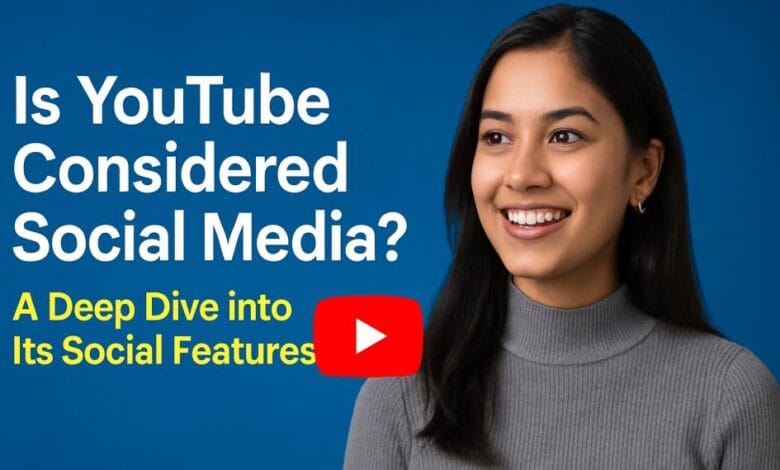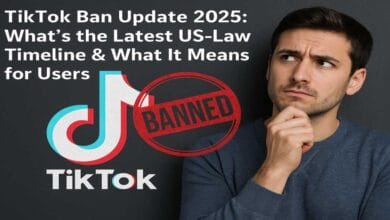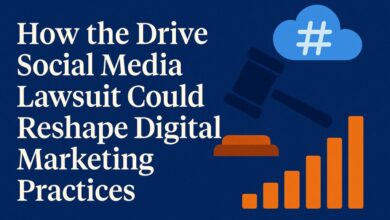
Is YouTube Considered Social Media in 2025? A Deep Dive into Its Social Features
YouTube began in 2005 as a straightforward video‐sharing site, but over two decades it has evolved into a sprawling ecosystem where more than 2.5 billion logged‑in users visit each month to watch, create, and interact with content. In this dynamic landscape, marketers, creators, and casual viewers alike increasingly ask: “is Youtube considered social media?” The answer shapes everything from platform strategy to content creation and in 2025, YouTube’s social dimensions are more pronounced than ever.
Beyond simply hosting videos, YouTube now offers real‑time live streams with interactive chat, a “Posts” feed for polls and behind‑the‑scenes updates, and Short’s answer to bite‑sized, viral storytelling. These features blur the lines between a search engine and a social network, turning passive viewers into active community members. Experts estimate that channels engaging regularly with Community Posts and Shorts see up to 30% higher subscriber retention, highlighting the tangible benefits of YouTube’s social toolkit.
Defining Social Media: What Qualifies as a Social Platform?
Before answering is YouTube considered social media, we must clarify what makes a platform “social.” At its core, social media encompasses the following four criteria:
- User‐Generated Content (UGC): Platforms must enable users to create and share their own content.
- Interactive Engagement: Features such as comments, likes, reactions, and direct messaging foster two‐way communication.
- Networking & Community Building: Users follow or subscribe to others, forming networks and interest‐based communities.
- Potential for Virality: Algorithms or user behaviors that amplify content, enabling rapid spread across networks.
Platforms like Facebook, Instagram, TikTok, and Twitter exemplify these pillars. Understanding these criteria sets the stage to evaluate whether YouTube’s features align it with social media or keep it primarily as a content repository.
Is YouTube Considered Social Media? Historical Evolution & Key Milestones
YouTube launched in February 2005 as a simple video‐hosting site, where users shared brief clips famously “Me at the Zoo” on April 23-2005, capturing the platform’s original spontaneity, The Verge. Over time, successive feature rollouts transformed YouTube into much more than a passive library:
- 2008: YouTube Live debuted as an experimental streaming event, marking YouTube’s first foray into real‐time interaction Wikipedia.
- 2011: The permanent YouTube Live section launched on April 8, 2011, enabling creators to host live events, Q&As, and premieres on Wikipedia.
- 2016: The “Community” tab introduced text, polls, and image posts directly to subscribers’ feeds, fostering direct creator‐viewer dialogue Search Engine Journal.
- In September 2020, YouTube Shorts was introduced in India and then rolled out worldwide in 2021. This new feature brought short videos similar to TikTok, allowing users to like, comment, and share content.
- 2024: YouTube rebranded “Community” as “Posts” and expanded the feature to all creators, signaling a commitment to text‐based social engagement Gadget BridgeGizbot.
By 2025, these milestones have coalesced into a platform with over 2.5 billion monthly active users, engaging with both long‐form and short‐form content, and participating in community discussions DemandSageGlobal Media Insight. This evolution provides strong evidence that YouTube now meets and in some ways exceeds the fundamental criteria of social media.
Core Social Features That Make YouTube a Social Platform
User‑Generated Content & Community (Posts)
At the core of YouTube are videos created by users, and since 2016, this has been enhanced by the addition of the Community/Posts tab. Creators share behind‐the‐scenes photos, polls, and text updates, while subscribers respond with comments and emoji reactions. In 2025, Community Posts appear in subscriber feeds, mirroring the scrollable social feed model of Facebook or Instagram Social Media Today. The process of creating and sharing content in both directions helps to build a genuine community.
Subscriber Networks & “Follow” Dynamics
Unlike typical “friends” on Facebook, YouTube employs a “subscribe” model: users follow channels and receive notifications when new content or Posts appear. With over 2.7 billion subscribers across the platform in mid‑2025, creators leverage subscriber counts as social proof, underscoring community size and influence Global Media Insight.
Engagement Mechanics: Likes, Comments & Shares
YouTube videos and Shorts feature likes/dislikes, comments, and share buttons, encouraging direct feedback and content distribution. Live streams add real‑time chat, polls, and super‑chats, deepening interaction. These mechanisms mirror the engagement features of classic social platforms, enabling conversations and peer feedback.
Viral Potential & Algorithmic Amplification
YouTube’s recommendation algorithm promotes content based on watch time, engagement, and relevance, driving virality. Shorts leverage a separate recommendation engine optimized for quick engagement loops, similar to TikTok’s “For You” feed. This algorithmic curation amplifies creator reach and fosters discovery, integral to social media dynamics.
YouTube vs. Traditional Social Media Platforms: A Comparative Analysis
YouTube vs. Facebook & Instagram
- Content Length: YouTube supports long‑form videos (up to 12 hours) and Shorts (up to 180 seconds), while Facebook and Instagram cap video lengths (e.g., Instagram Reels at 90s).
- Discovery: YouTube prioritizes search and “Up Next” recommendations, whereas Facebook/Instagram emphasize follower feeds and hashtags.
- Monetization: YouTube’s AdSense, channel memberships, and super‑chats offer diverse revenue streams; Facebook monetizes through ad breaks and branded content tags.
- Community Tabs: YouTube’s Posts resemble Facebook’s text/image feed posts, but integrated directly on a creator’s channel homepage.
YouTube vs. TikTok & Emerging Video Apps
- Algorithm Focus: TikTok’s FYP is purely algorithmic, surfacing global content; YouTube balances subscriptions with recommendations.
- Feature Sets: Both platforms host short‐form video with editing tools, filters, and sounds; YouTube uniquely integrates its massive music library via YouTube Music.
- Creator Ecosystem: YouTube invests over $100 million in a Shorts creator fund, rivaling TikTok’s creator payouts and affiliate partnerships Vogue Business.
- Cross‐Platform Reach: Many TikTok creators repurpose content to YouTube Shorts, leveraging YouTube’s search traffic and longer shelf life.
Through these comparisons, YouTube emerges not only as a video search engine but as a fully fledged social platform, blending feed‐based and subscriber‐based interactions.
YouTube’s Dual Identity: Balancing Search Engine Power with Social Networking
While YouTube functions as the world’s second‐largest search engine handling over 3 billion searches per month, its social features have matured to rival dedicated social networks. This hybrid identity preserves YouTube’s discoverability strengths while layering on community interactions:
- Exploration & Uncovering: Users can locate specific subjects, guides, and entertainment with the aid of advanced filters, chapters, and AI-based suggestions.
- Social Hub: Community Posts, live chat, and Shorts feeds offer a dynamic social experience, increasing on‐platform time and engagement.
This duality positions YouTube uniquely: users enter for information or entertainment and stay for community interaction, blurring lines between search behavior and social networking Global Media Insight.
Implications for Marketers & Creators in 2025
Building Authentic Community & Trust
With ever‑tightening Google EEAT (Expertise, Experience, Authority, Trust) guidelines, brands on YouTube must cultivate transparent, value‑driven content. Q&A Posts, behind‑the‑scenes Shorts, and live streams humanize creators, strengthening trust signals.
Monetization Tools & Ad Formats
Beyond traditional pre‑roll ads, creators leverage:
- Super‑Chats & Super‑Stickers: Fans purchase highlighted messages during live streams.
- Channel Memberships: Exclusive badges, emojis, and members‑only Posts.
- Shorts Fund & Brand Deals: Collaborative promotions within short‑form content.
Best Practices for a Social‑First YouTube Strategy
- Unified Brand Voice: Maintain consistency across long videos, Shorts, and Posts.
- Cross‐Platform Teasers: Use Twitter/Instagram to drive traffic to YouTube community discussions.
- Data‑Driven Scheduling: Post when MAU peaks typically evenings and weekends backed by YouTube Analytics.
Adapting to YouTube’s social features enhances community loyalty, watch time, and channel growth.
Regulatory, Safety & EEAT Considerations
Youth Access Debates & Content Moderation
On July 22, 2025, YouTube raised the minimum live‑streaming age from 13 to 16 to protect minors, disabling chat features when younger teens stream without adult supervision Lifewire. This policy underscores platform responsibility for user safety.
Credibility, Transparency & Google EEAT on YouTube
Google’s EEAT framework extends to video content: creators should cite sources in descriptions, disclose sponsorships, and adhere to community guidelines. Fact‑checked, high‐quality videos and Posts boost algorithmic trust, improving search rankings.
Future Trends: What’s Next for YouTube’s Social Features?
- Interactive Video Layers: In‑video polls, quizzes, and branching narratives to deepen engagement.
- AI‑Powered Community Management: Automated moderation tools and personalized community feed curation.
- VR/AR Integrations: Virtual watch parties, 3D avatars in live chats, and immersive Shorts experiences.
- Enhanced Shoppable Shorts: Direct product tagging and in‑app checkout for seamless commerce.
These innovations will further cement YouTube’s role as both a content discovery engine and a social gathering space.
Conclusion:
FAQs
Q1: Is Youtube considered social media or a search engine?
A1: YouTube serves dual functions: it’s the world’s second‐largest search engine for videos and an interactive social platform with community, live chat, and Shorts feeds.
Q2: In 2025, what social aspects make YouTube unique?
A2: Key features include the Community/Posts tab, super-chats in live streams, Shorts with social engagement, and AI‐driven recommendations that amplify user interactions.
Q3: How can brands leverage YouTube’s social elements?
A3: Brands should use Community Posts for announcements, host live Q&A sessions with super-chat promotions, and create Shorts with shoppable links to drive engagement and conversions.
Q4: Has YouTube’s definition of social media changed over time?
A4: Yes. From a passive video library in 2005, YouTube has incrementally added live streaming, community posts, and short-form features, aligning it closely with social media platforms.
Q5: What future updates might enhance YouTube’s social status?
A5: Expect interactive in-video polls, AI-powered moderation, VR/AR community spaces, and direct commerce integrations within Shorts, further solidifying YouTube’s social ecosystem.






4 Comments